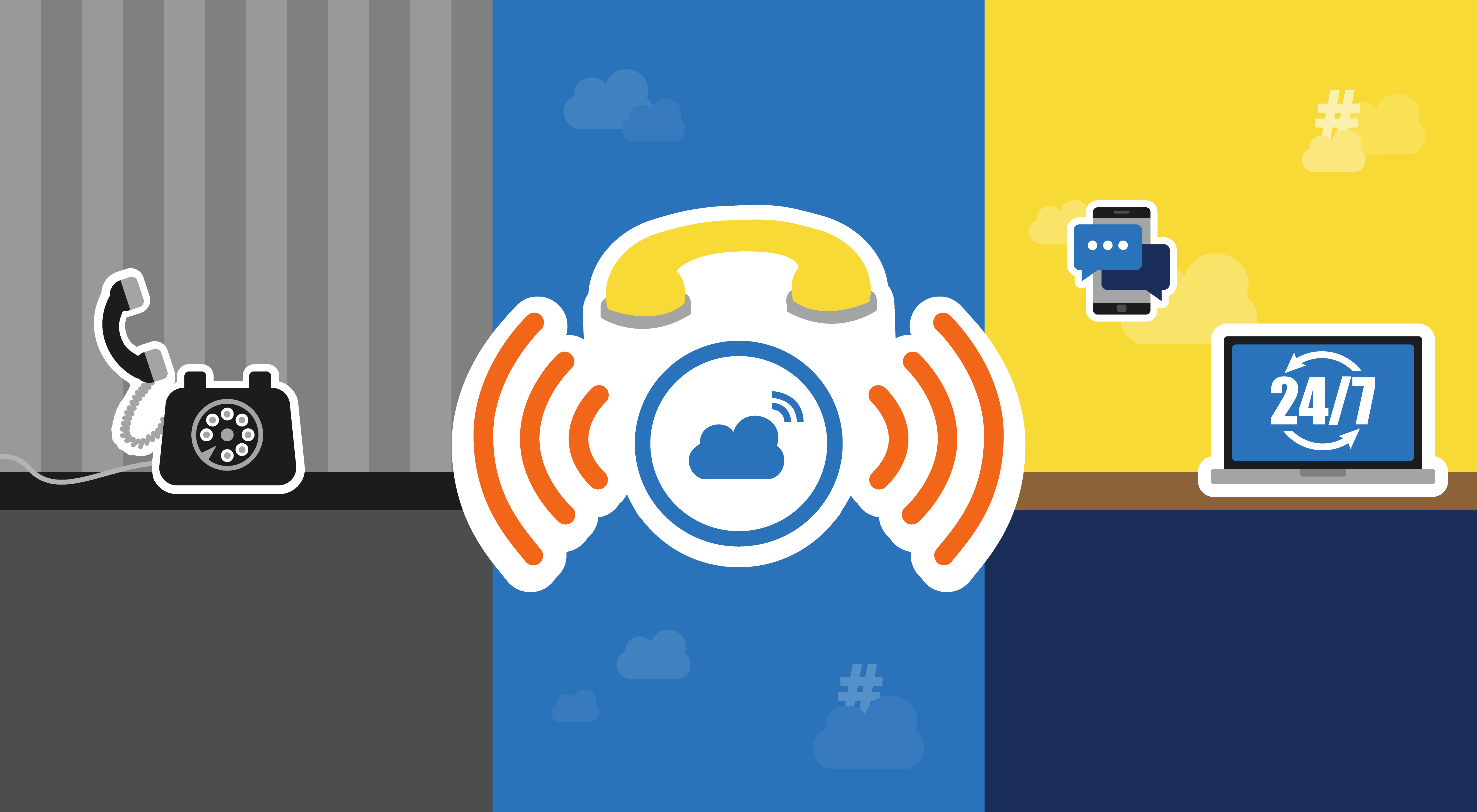Guide to Porting Landlines to a VoIP System

Porting your phone numbers from a landline provider to VoIP sounds like a complicated process. But fortunately for businesses both big and small, all it takes is a little prep work for Number Porting to be a breeze.
The most common question we get as a business VoIP provider is “Can I keep my same phone numbers when I switch from landlines to VoIP?”
To put that concern to rest right away: Yes. You can keep all your phone numbers when you upgrade your business from landlines to a new VoIP phone system.
You surely have other questions though, which is why we put together this handy dandy guide that goes over the Number Porting process and how you can avoid common mistakes.
What is Number Porting?
Number Porting is the act of transferring a phone number from one provider to another. More specifically for our purposes, it’s used to keep the same phone numbers you had on your landline system now that you’re upgrading to VoIP.
Yes, Number Porting can be a bit of a hassle, especially if you have tons of phone numbers for sales or direct dialing purposes. However, that’s nothing compared to the headaches of having to implement all new phone numbers for your business. Existing customers would suddenly have no way to contact you. All of your marketing campaigns and online postings would need to be updated. Everyone’s email signature would be instantly out of date.
You get the picture. For a modern business, losing your phone numbers is pretty apocalyptic.
Good thing FluentStream and other VoIP providers make it as simple and convenient as possible to move your land-locked phone numbers up into the cloud.
HOW TO PORT YOUR NUMBERS TO YOUR NEW VOIP SYSTEM
Though it does take a bit of work, by no means does porting your landlines to a new VoIP system need to be a stressful experience. Let’s go over each step — and everyone involved — so you can better understand the process.
Participants in a Number Port
No single company or administration controls the entire porting process.
Hopefully, if everything goes according to plan, you’ll only need to care about your old and new providers. We’ll still mention everyone involved though, just in case.
- Customer (That’s you!)
The business who owns the phone numbers being ported - Losing carrier
The analog provider that currently holds your phone numbers - Winning carrier
The VoIP provider you are moving your business to - Number Portability Administration Center (NPAC)
The world’s largest phone number portability registry - Local Regulatory Authority
For businesses in the US, this is the FCC
Step 1: Fill Out a Porting Form
First things first, you’ll need to fill out a porting form with all the information a new provider needs to transfer service. These can be quite extensive, but are absolutely necessary for ensuring a Number Port goes smoothly.
Properly filling out a porting form requires details such as:
- Your address
- All the phone numbers you want to Port Your account number
- Your billing telephone number
- The authorized contact for your business
On the plus side, porting forms aren’t necessary for the service provider you’re leaving.
Step 2: Check Your Number Portability
In nearly all cases, your porting request will go through without a problem. Easy peasy lemon squeezy.
Very rarely though, a problem between your previous number carrier and your new one will make it impossible to move your landline number to a new VoIP system. Again, this is exceedingly rare, but it does happen.
A much more common issue is that your porting request will be temporarily rejected for other, fixable reasons. These include the usual bureaucratic suspects like spelling mistakes, number errors, incorrect account details, etc. Since information needs to stay consistent across all carriers, any of these issues will see your port request rejected.
Always perform checks, double checks, and even triple checks to ensure your Number Port goes smoothly. Any delays can put your request behind schedule and turn into a hefty inconvenience for your business.
Step 3: Letter of Authorization
This is when things get much easier for your business.
Once you’ve (double and triple) checked the portability of your phone numbers, you need to complete a letter of authorization. This letter gives your new VoIP provider permission to speak with the company you’re leaving and legally take over the administration of your phone numbers. Don’t worry, it’s quite straightforward and takes very little time to complete.
As soon as the letter of authorization is completed, your new VoIP provider can take over the process and start digging into the nitty gritty details of setting up a new phone system for your business.
Step 4: Proof of Ownership
The final step in your Number Port is providing proof that you do in fact own the landline system you’re porting to VoIP. This is usually just a bill with your business name and address on it that confirms your landline numbers.
HOW TO AVOID COMMON PORTING PROBLEMS
As we discussed above, the most common source of Number Porting problems is mistakes or incomplete information on your port form. Since any problem can result in your port request being denied, let’s go through the errors we see most often so you can avoid them:
- The business name on your port form is wrong. This may sound silly, but it’s the perfect example of how even a single typo can cause problems with your port request. You wouldn’t believe how often we catch people spelling the name of their own company wrong because they’re in such a rush to fill out their forms.
- The address you submitted on your porting form doesn’t match what’s on record with the losing carrier. Always make sure all your business information is up to date before submitting your request.
- Your billing number is incorrect. If you only have a single phone number, that will be your billing number. However, most businesses have multiple phone numbers. People will sometimes assume their billing number is the main line for their business or even the number for their billing department, but that’s not always the case. Make sure to check an invoice from your current provider to confirm your billing number.
- You tried to submit multiple requests for the same phone numbers. In most cases, the losing carriers will simply reject all requests if they receive more than one for the same numbers.
- You either did not provide a PIN or provided the wrong PIN. Some carriers use PINs during number porting requests for additional security. Make sure you know what your PIN is before making requests.
- Never ever cancel your current service before porting is complete.
Remember, any problems with your forms can result in a delayed number port. Especially for businesses that are moving offices or adding another location, delays can result in multiple days of communications downtime and lost revenue. That’s multiple days of customers you can’t speak with, orders you can’t fulfill, leads you can’t contact.
That’s why the best way to avoid Number Porting problems is to go with a VoIP provider that offers dedicated onboarding support.
When you switch to FluentStream, our award-winning onboarding team works with you every step of the way to ensure that your information is accurate and your number port goes smoothly. We’ve been helping businesses like yours port from landlines to VoIP for almost a decade, and we have all the experience necessary to make sure it’s done right.
Have more questions about how a VoIP system improves your marketing strategy? Want to learn more about how FluentStream helps you get more leads and increase revenue? Let us know at sales@fluentstream.com or by calling 303-GO-CLOUD and selecting Option 1.


